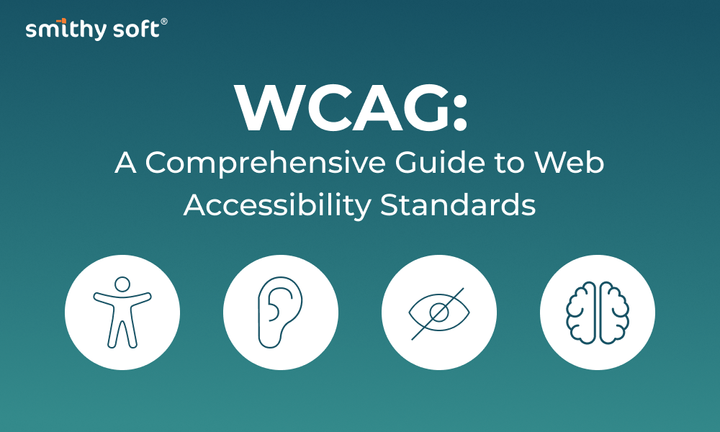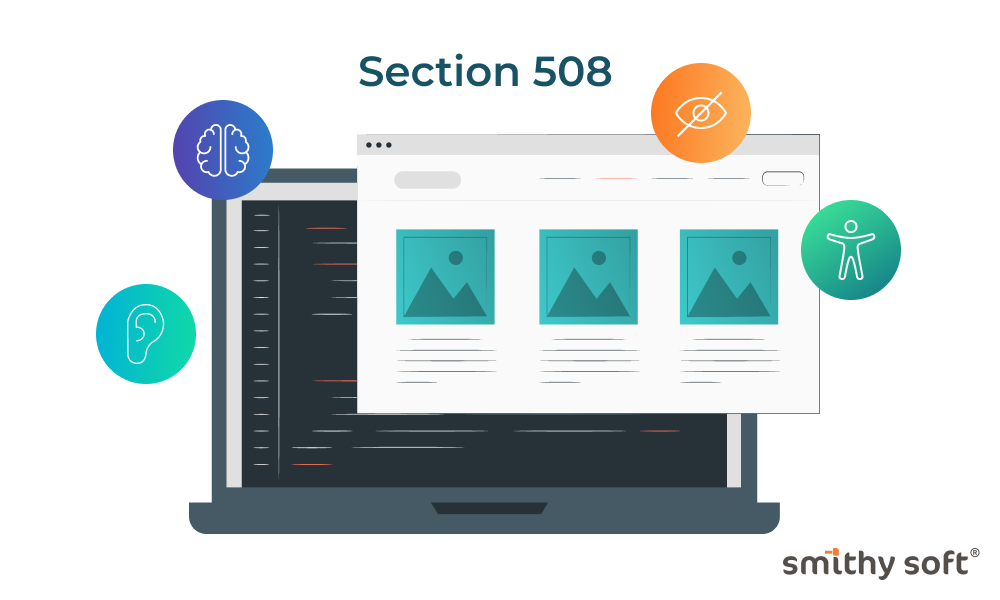Why Your Business Needs a Software Audit: Key Benefits and Best Practices

The absolute majority of companies use a lot of digital tools and apps in their operational activity. Companies are like human organisms, where everything works until it doesn’t. A moment comes when the organism starts failing, and then we conduct diagnostics, detect the reason for illness, and eliminate it. A software audit acts very similarly, it checks if the app functions properly from law, operational, and usability points of view, detects violations, and draws up recommendations about how to fix them.
The best practice is to conduct software audits regularly and on time to get adequate information, identify problems, and solve them promptly. This will help you to foresee and prevent any issues with software that occur due to various factors. Also, it might help you to soften the consequences of the issues with regulation or licensing before they uncoil into a severe and costly problem.
Our auditors are always ready to help you out with Software Audits at any stage!
What is a Software Audit?
A software audit is a complex technical process during which an internal or external audit specialist checks the quality of the software and its compliance with norms, standards, and contract agreements.
The purpose of the audit is to check the software used in certain companies, as well as its state, quality, conformity, legal, industry standards, and organizational requirements.
Why Do You Need a Software Audit?
The audit helps to detect such problems as security vulnerability, non-compliance with license agreements, performance issues, efficiency, etc.
First of all, software audits help you keep all your tools in good condition. Software gets frequent updates and changes with each new version. Often new patches contain useful tweaks such as cyber security. So, are all your apps effective and safe?
Do you have all the necessary licenses for legitimate usage of corporate software? Have you found the best offers, or are there licenses you don’t use and can be replaced with cheaper ones? The audit is also aimed to help you save.
The important aspect also concerns the quality of the respective app from the point of view of its usability and inclusivity. Software audits can be useful if you are trying to determine why your website loses clientele. Is it because of technical problems, difficulty in visual perception, or limited possibilities of use?
If you develop your software and wish to make sure that it’s functioning, fully effective, and intuitive for all of the users, the audit can reveal this too.
Types of Software Audit
Depending on who carries out an audit, they can be internal and external:
- Internal audits are conducted by employees inside the company;
- External audits are conducted by independent third parties or external agencies.
There can be many types and forms of software audit, and it all comes down to what exactly you want to inspect, what your motivation is, and what goals for the check you pursue. Among the most widespread audits are:
Source Code Audit involves reviewing the source code to ensure it meets industry standards, is well documented, and free from errors and potential vulnerabilities. You can do it manually or with the help of automated tools.
Infrastructure Audit assesses productivity, reliability, and security of core equipment, network, and server components. This includes wise resource utilization, scalability, and emergency recovery plan evaluation.
Software Quality Audit checks that all the apps and programs you use are functional and up-to-date. Are there alternatives that are more effective? The result of this audit is the recognition of quality deficiencies and suggestions for improvement.
Software Security Audit ensures that all the software in your company is safe to use and properly protected against the threats of hacking, data leakage, cyber-attacks, etc. Such verification may include penetration testing, web-application security testing, compliance testing, third-party software security testing, and your company data flow analysis (how it is processed and who has access to it).
Usability and accessibility (UX) audits can identify if there are any user experience issues. Such audits are necessary to make sure that your app is convenient and enjoyable to use. Their purpose is to the user flow and the “customer journey.” One of the UX audit techniques is a cognitive walkthrough that determines if the app performs different tasks accurately.
State and industry regulations compliance audit is conducted when the software needs to have approval from the government. This needs to be done to ensure that the errors in the applications related to construction, finance, or healthcare do not cause devastating harm to an ordinary client. For example, a mistake in the app that checks blood sugar levels for people with diabetes could be dangerous to a person’s health or even life. For this reason, healthcare organizations must adhere to HIPAA (Health Insurance Portability and Accountability Act) regulations to prevent significant breaches of user information. If you develop for the financial sector, keep in mind that businesses often need to follow digital-focused regulations like GDPR (General Data Protection Regulation). And this type of audit checks exactly this kind of compliance and so is vital if you work in a sensitive field. Moreover, it’s also essential to address general data security concerns because regulations such as GDPR impact nearly every app on the market today.
A system audit is a complex evaluation of the organization’s information systems, including hardware, software, networks, and processes. These audits help assess the system’s security, reliability, performance, and compliance with industry standards and regulations and identify potential risks and vulnerabilities at scale.
Stages of Software Audit

The software audit is a very flexible process. It can be altered, broadened, or narrowed depending on the SW tools that you use, the purpose you use them for, your business expectations, etc. The basic steps of audit:
1. Planning: Define the audit’s scope, objectives, and criteria. Identify the systems, processes, and documentation that need to be reviewed. Also sent the timeline for the audit and estimated cost.
2. Preparation: Gather all the necessary documentation (software development plans, QA procedures, technical specifications, licenses, etc.). Allocate clear guidelines for conducting the audit and inform the team and stakeholders about the upcoming check.
3. Initial Meeting: Meat the team and stakeholders to discuss and approve the audit process, schedule, and expectations.
4. Conducting the Audit: Depending on the audit’s type and purpose, review documents and the code (analyze the source code to check if it complies with the coding standards, best practices, and security guidelines). Check the code quality and examine its efficiency and performance. Evaluate security using vulnerability scanning, penetration testing, and access control evaluation. Also, carry out other necessary software testing such as unit, integration, system, and user acceptance testing. Make sure that these tests are comprehensive, well-documented, and executed consistently.
5. Interviews: Question all individuals involved in the project, including developers, project managers, and other stakeholders, to gather information and clarify any findings of the audit.
6. Analysis and Prepping the Reports: this is the time to consolidate all the results into a systematized and comprehensive report that will highlight the strengths and weaknesses of the system that underwent audit. You can also provide recommendations for improvements and assign priority levels to the issues.
7. Reporting: Present the audit results to the team.
How Can You Benefit From Software Audits?
Oftentimes, audits are perceived by employees as a painful process. The reason is that it reveals someone’s incompetence and mistakes that led to various types of losses. At the same time, it has plenty of rewards for business. For example:
- It allows us to get rid of the unnecessary, and reduce the number of redundant licenses, inactive permissions, needless tools, and subscriptions.
- Ensures your software is safe, reliable, legal, and performs optimally.
- Encourages to update the apps you use in internal processes to stop using outdated/legacy versions that may potentially have security gaps.
- Helps avoid legal risks linked to licensing and fines.
- Helps in revealing the objective state of your software code regardless of how perfect it seems to its creators. Auditors are aware of the most recent industry standards and can point to certain aspects for alteration because code and design requirements tend to change.
- Shows you the internal business process problems, if there are any. The audit will discover what causes the issues with your software where the weakest control link hides. Is your problem in the low quality of the workforce, stressful management, or banal overwork and burnout? A proper audit will analyze not only the software but also the approaches and conditions in which it was developed.
A Few Practical Tips
- Set the optimal audit schedule. For example, once a year, and depending on the needs, emerging threats, and changes, it can be carried out more often.
- Both internal and external audits are important. Internal audits are usually conducted by businesses more often – once every couple of months, once a quarter. However, conducting internal audits does not exclude the necessity for external audits as they provide more objective and impartial reports.
- The best approach would be to take care of an internal audit before organizing an external. This way, you will be able to understand organizational needs and fix problems before experts will test your system. If your team lacks the needed internal expertise, it is advisable to go ahead with the external software audit.
- Lastly, we would like to emphasize the importance of finding a reliable audit partner. A comprehensive software audit requires the experience of skilled professionals from various software development specialties. SmithySoft is a company that will happily provide you with qualified, reasonable, versatile, and professional external software audit services! Contact Us!
CONCLUSIONS
So, a software audit is a process of professional research, detection, capturing and systematization of the problems with software that may cause problems with the security of your program and its perception among users, and providing recommendations for eliminating those problems.
Audits can be performed by both the internal resources of your company and by an external organization. Internal audits mainly function as a tool to analyze and capture a certain situation. The external audit provides an unbiased observation of the software and dives into areas usually unexplored by the internal audit, offering fresh and relevant solutions. You can order a software audit from us, and we’ll gladly do it for you!


